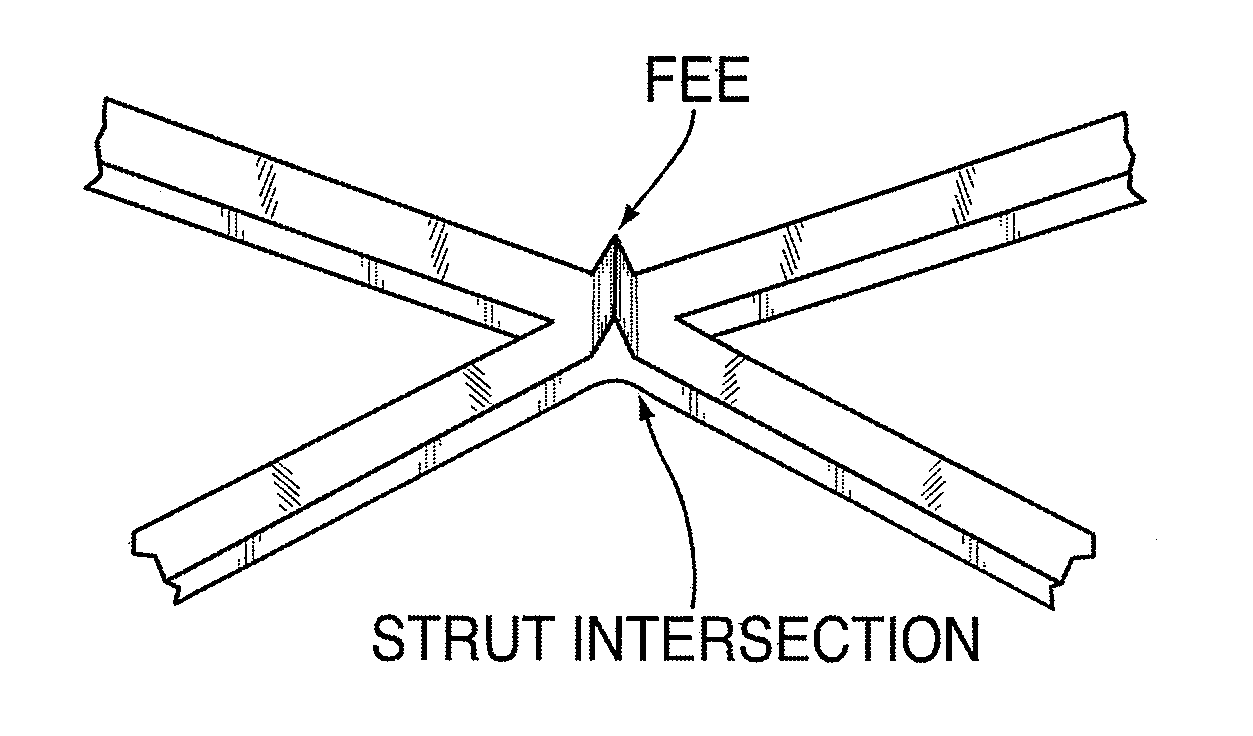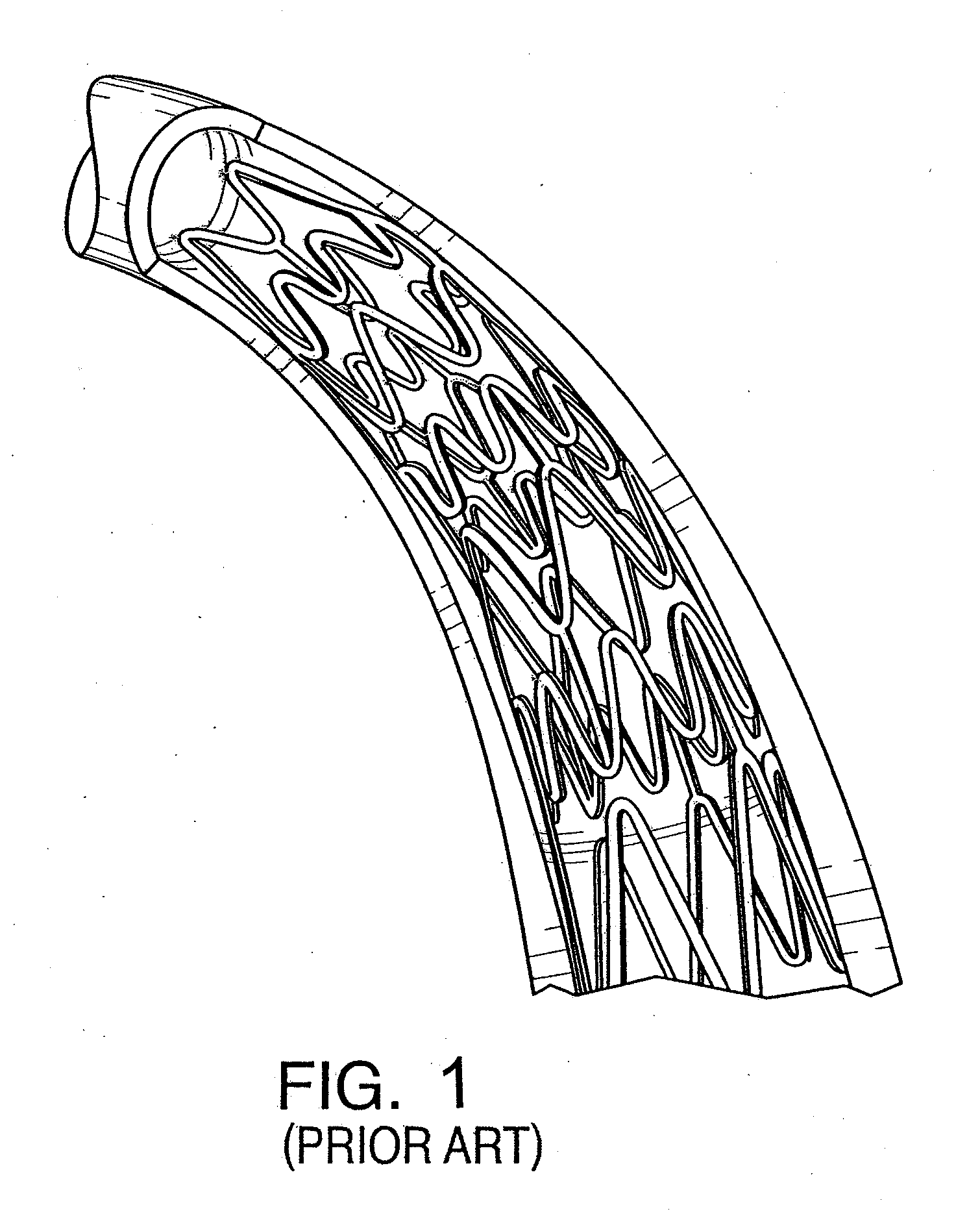Stent device having focal elevating elements for minimal surface area contact with lumen walls
a technology of stent and lumen wall, which is applied in the field of stent devices, can solve the problems of accumulated blockage of stent, inability to perform the intended function, and inability to reduce the pressure burden, so as to reduce the contact area, minimize the surface contact, and reduce the effect of pressure burden
- Summary
- Abstract
- Description
- Claims
- Application Information
AI Technical Summary
Benefits of technology
Problems solved by technology
Method used
Image
Examples
Embodiment Construction
[0044]In the present disclosure, a stent may be improved in design and performance in the human body by the use of focal elevating elements on the outer surface of the device to minimize surface area contact of the stent material with the organ lumen walls. The focal elevating elements operate to elevate adjacent sections (struts) of the stent away from the organ lumen walls to minimize friction generated at contact areas. The focal elevating elements increase outward pressure at contact points with the organ lumen walls to maintain them in stable contact, while elevating the adjacent sections of the stent out of contact with the organ lumen walls. The focal elevating elements (FEEs) are strategically placed to reduce the overall regional friction load (thought to be a source of inflammation, cellular proliferation, and the healing response that leads to re-stenosis) of the area being held open. These elevated contact points of the FEEs are believed to limit the histological respons...
PUM
 Login to View More
Login to View More Abstract
Description
Claims
Application Information
 Login to View More
Login to View More - R&D
- Intellectual Property
- Life Sciences
- Materials
- Tech Scout
- Unparalleled Data Quality
- Higher Quality Content
- 60% Fewer Hallucinations
Browse by: Latest US Patents, China's latest patents, Technical Efficacy Thesaurus, Application Domain, Technology Topic, Popular Technical Reports.
© 2025 PatSnap. All rights reserved.Legal|Privacy policy|Modern Slavery Act Transparency Statement|Sitemap|About US| Contact US: help@patsnap.com



